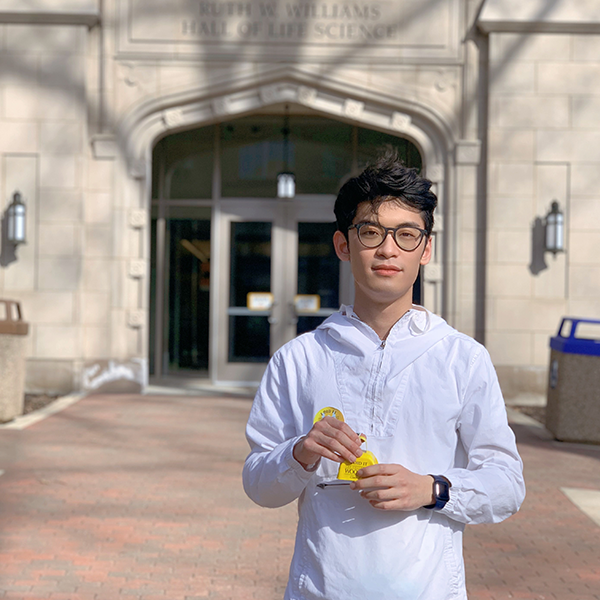
Deciphering Protein Evolution – Evidence of Negative Cooperativity in Cytosolic Taurocyamine Kinase from Arenicola brasiliensis and its evolutionary implication

Name: Mingyuan “Merlin” Li
Major: Biochemistry and Molecular Biology
Advisors: Dr. Mark Snider, Dr. Dean Fraga
The study of biological evolution-how and why biological traits change over generations—enables us to understand the history of life on Earth. From a molecular perspective, the evolution of species along the life history can be attributed to the evolution of proteins. Phosphagen kinases (PK) belong to a family of important enzymes that facilitate energy balance. Since different phosphagen kinases are present in all living forms, they provide an excellent model for studying protein evolution. Even though there are different proposed models for phosphagen kinase evolution, the exact path remains unknown. What can clarify the evolutionary relationship is a careful comparison of structures and functionalities among members of PK. This study focuses on negative cooperativity, an interesting structural feature where the binding of substrates in one subunit of the enzyme hinders the binding of the other subunit.
To better understand the evolutionary context for this negative cooperativity, the cytosolic taurocyamine kinase (CytoTK) from a sea worm species, was purified and examined for negativity cooperativity in forming a quaternary transition state analogue complex (TK –MgADP –NO3-–taurocyamine). Both fluorescent quenching and isothermal titration showed the presence of negative cooperativity. The results of this study provide insights into the possible evolutionary trajectories within the PK family.
 Loading...
Loading...
Mingyuan “Merlin” Li will be online to field comments on April 16:
8-10am EDT (Asia: evening, Africa/Europe: afternoon)
Posted in I.S. Symposium, I.S. Symposium 2021, Independent Study on April 2, 2021.
Related Posts
Related Areas of Study
Biochemistry & Molecular Biology
Biology and Chemistry combine in an interdisciplinary program for students with a passion for molecular events.
Major

